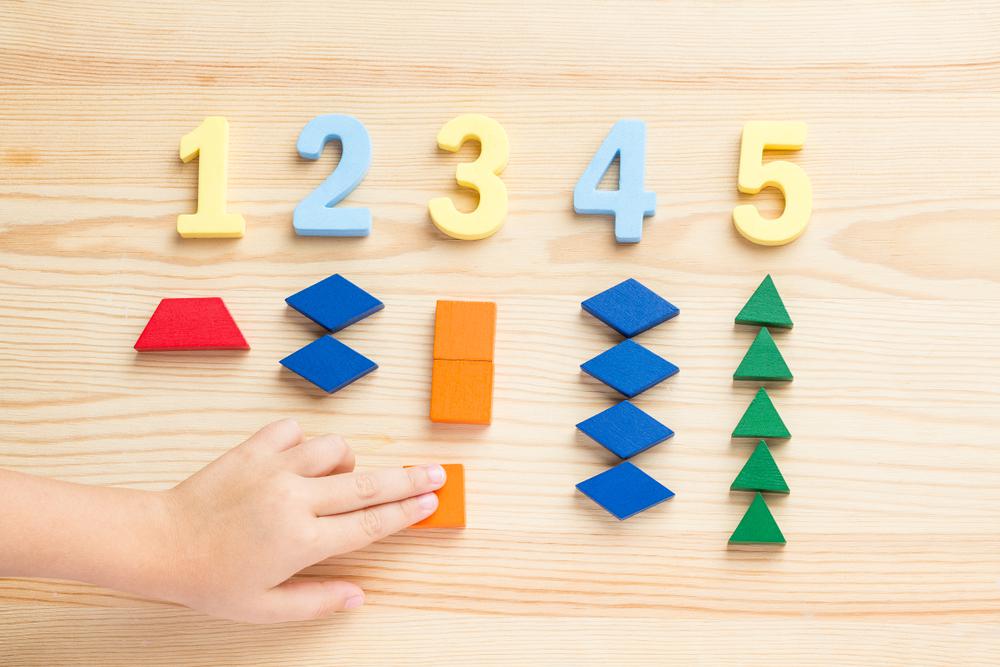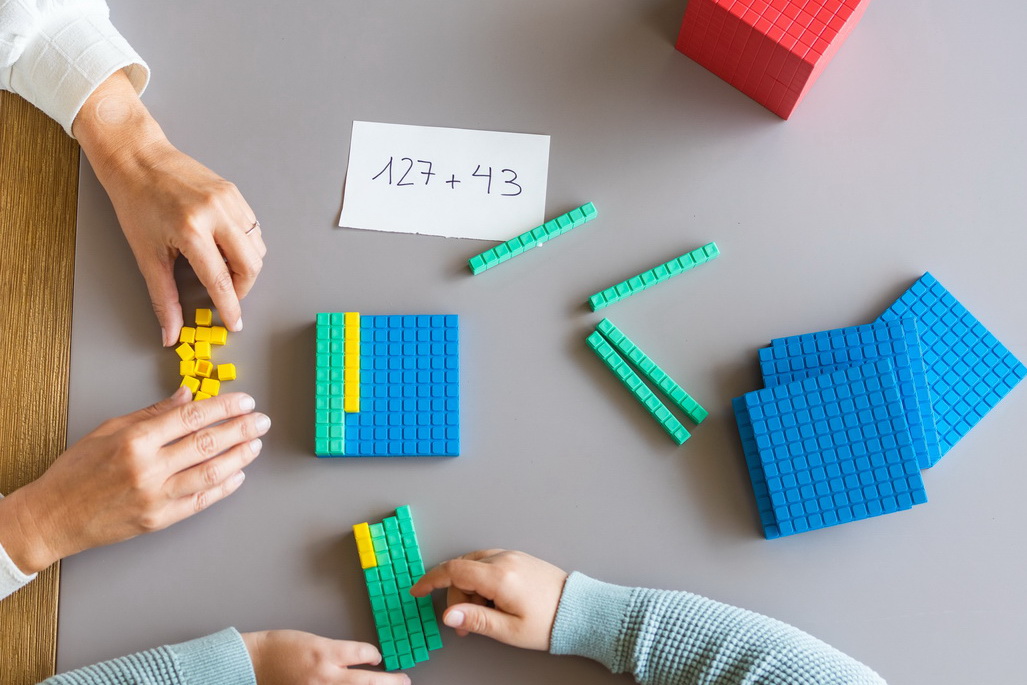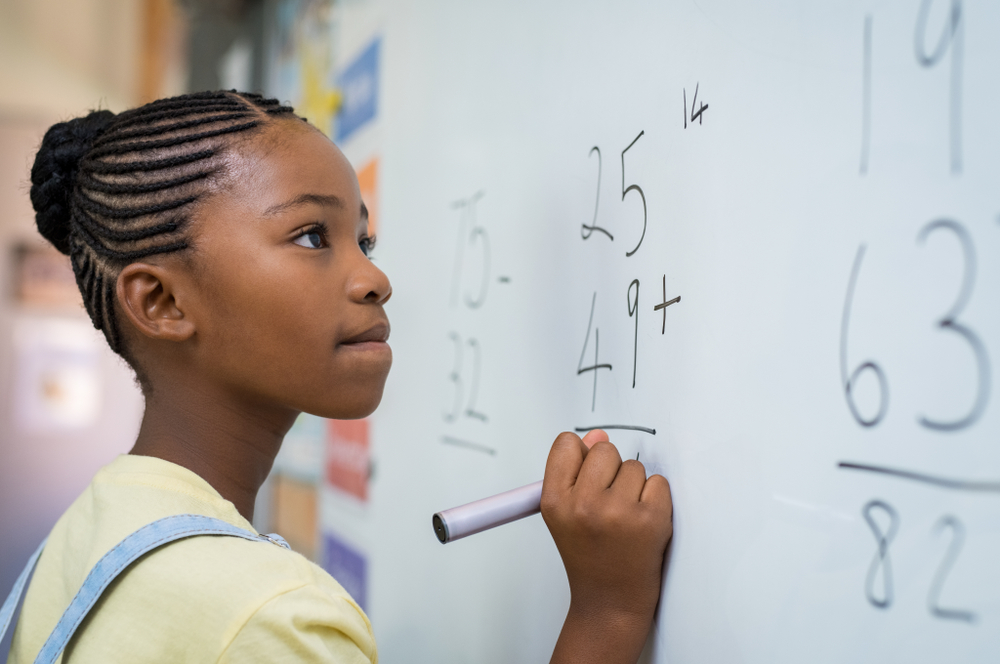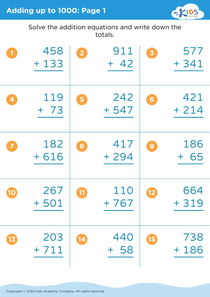Pattern recognition Numbers Worksheets for 5-Year-Olds
4 filtered results
-
From - To
Introduce your 5-year-old to the exciting world of numbers with our Pattern Recognition Numbers Worksheets! Designed by educational experts, these worksheets help young learners identify and extend numerical patterns, enhancing their problem-solving and critical-thinking skills. Perfect for preschoolers and kindergarteners, each activity is crafted to be engaging and age-appropriate, featuring fun themes and colorful illustrations. Our printable worksheets not only boost mathematical confidence but also prepare little minds for advanced concepts. Dive into a variety of exercises that make learning numbers a joyous adventure with Kid’s Academy’s outstanding resources. Let's make number magic happen!
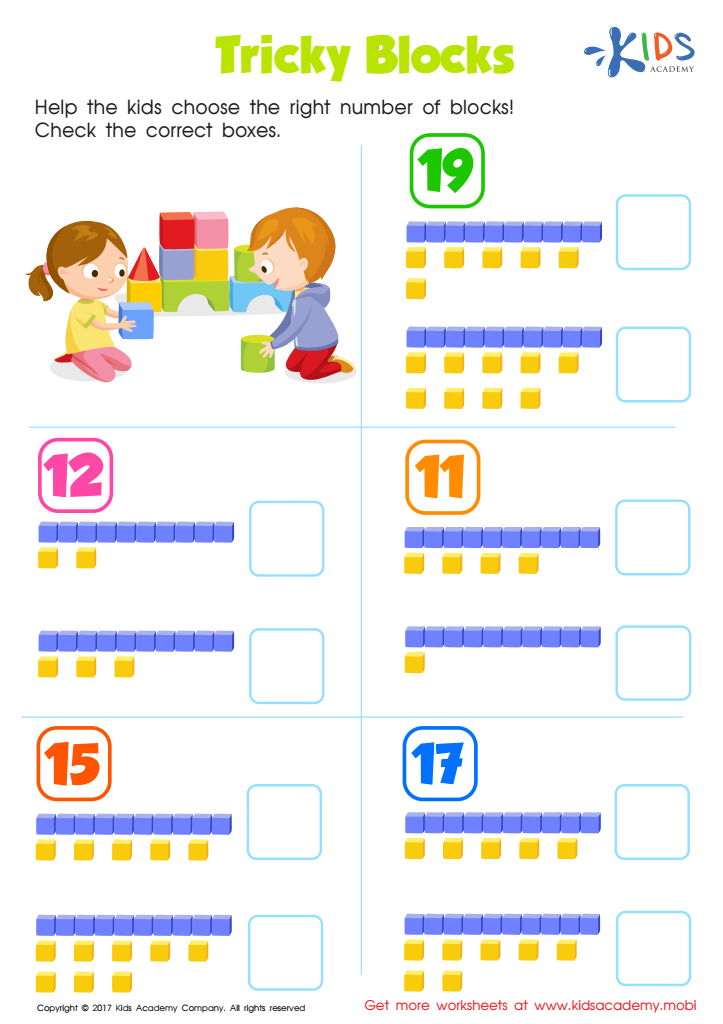

Tricky Blocks Worksheet
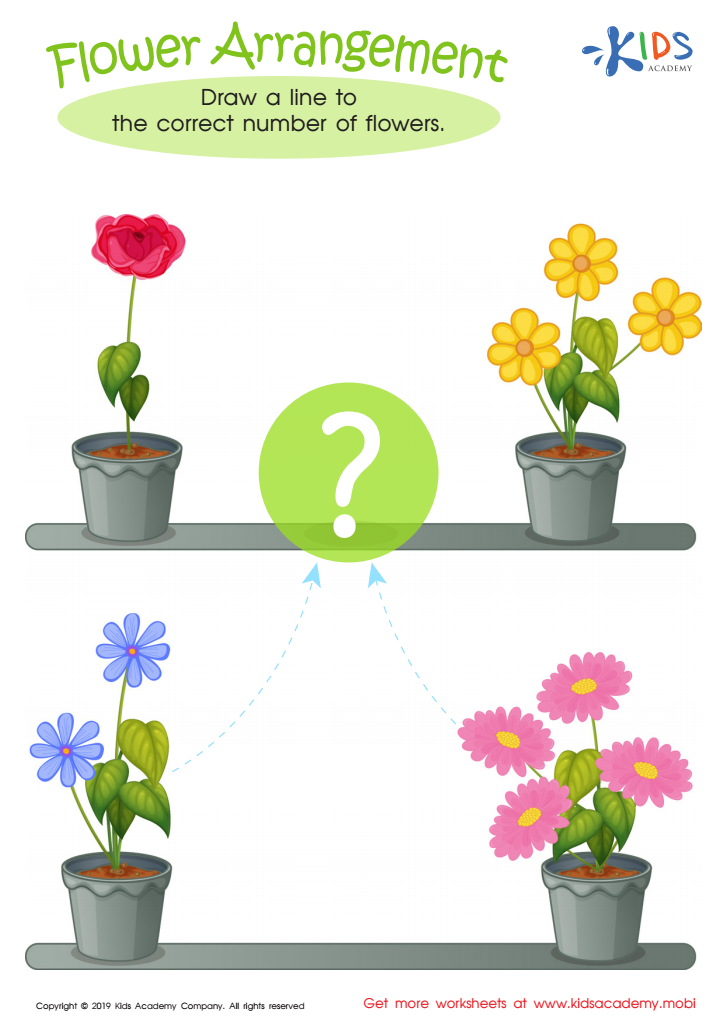

Flower Arrangement Worksheet
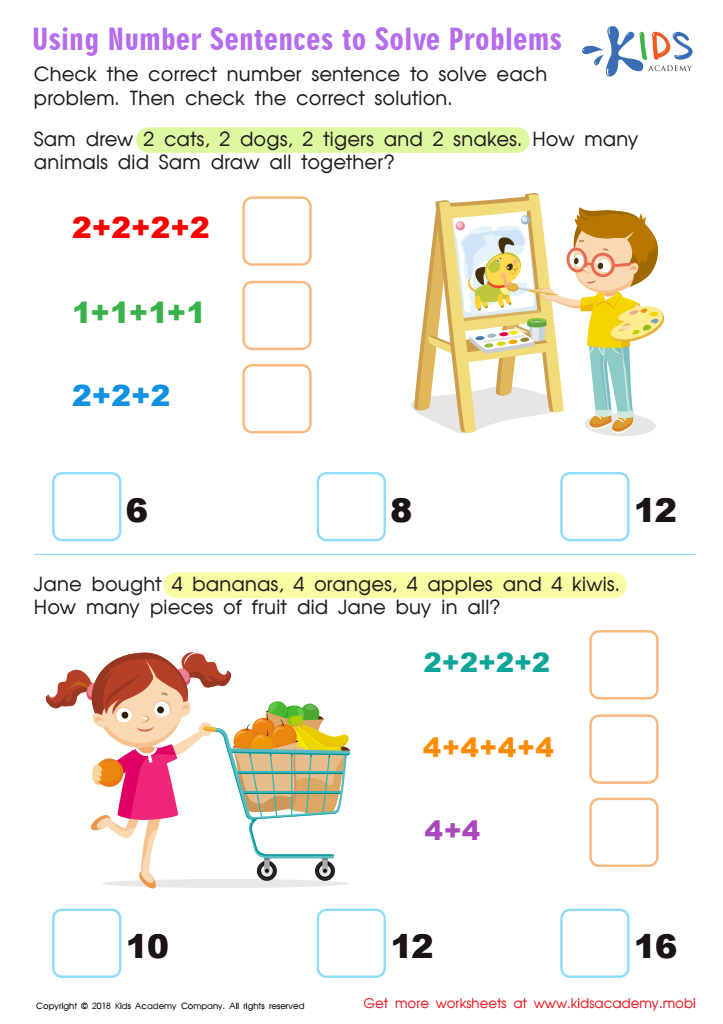

Using Number Sentences to Solve Problems Worksheet
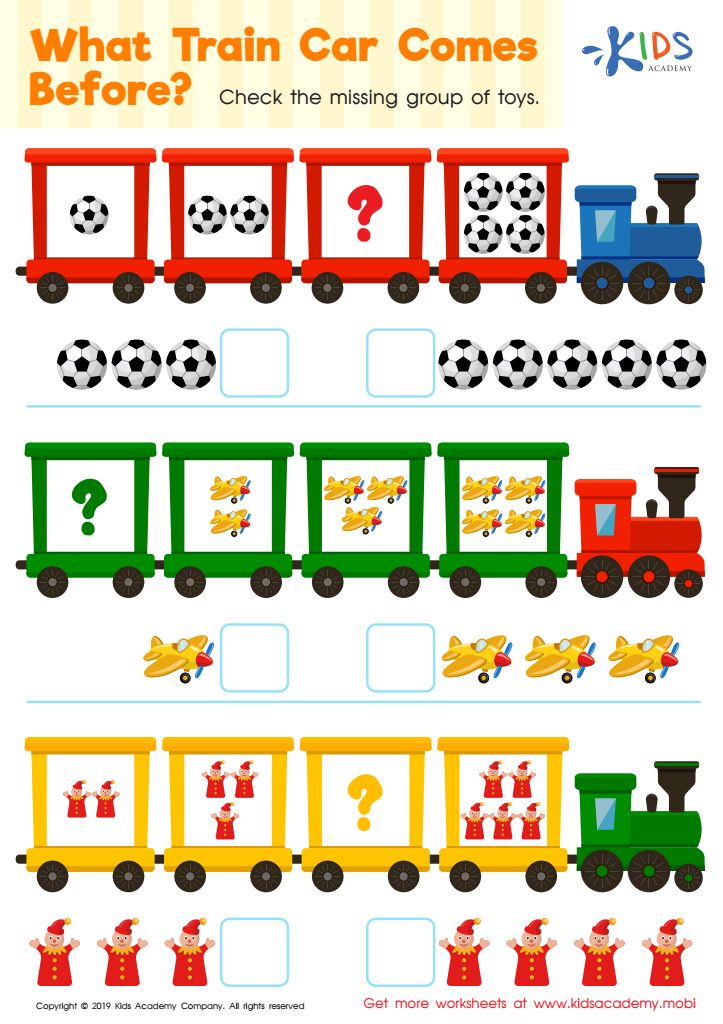

What Train Car Comes Before? Worksheet
Pattern recognition in numbers is a fundamental skill that plays a critical role in the cognitive development of 5-year-olds. When parents or teachers nurture this ability, they are laying the groundwork for a child's mathematical abilities and broader academic success.
First, understanding and recognizing patterns helps young children make sense of the world. Pattern recognition fosters logical thinking, enabling children to predict what will come next. This skill is crucial not only for mathematics, where recognizing number sequences can simplify addition and subtraction, but also for reading, where identifying letter patterns aids in decoding words.
Second, patterns in numbers promote problem-solving skills. By identifying relationships and sequences, children learn to approach problems methodically, enhancing their analytical capabilities. This strengthens their overall intellectual growth and prepares them for more complex concepts in later grades.
Third, engaging with number patterns makes learning interactive and fun. Activities like counting by twos or fives, identifying odd and even numbers, or recognizing shapes and sequences can be enjoyable, thus fostering a positive attitude toward learning.
In sum, pattern recognition in numbers is not merely an academic exercise but a vital part of cognitive development that equips children with essential skills for lifelong learning, making it imperative for parents and teachers to prioritize its development.

 Assign to My Students
Assign to My Students


